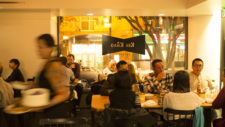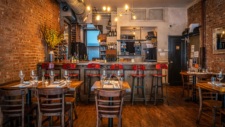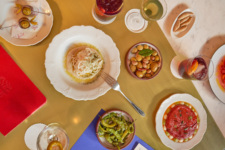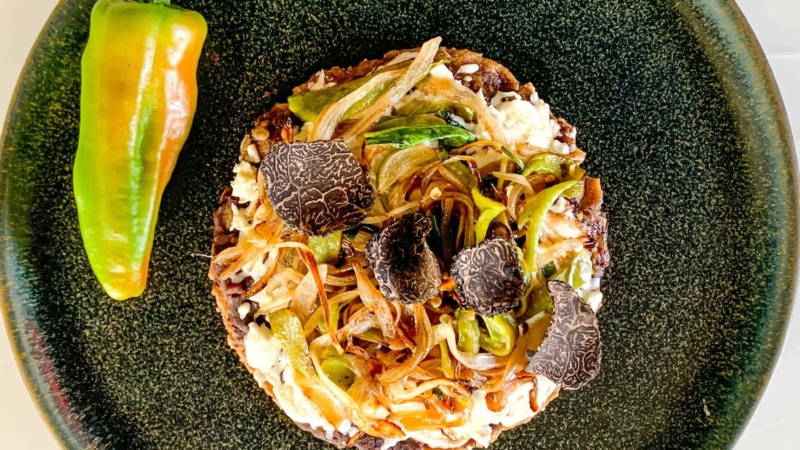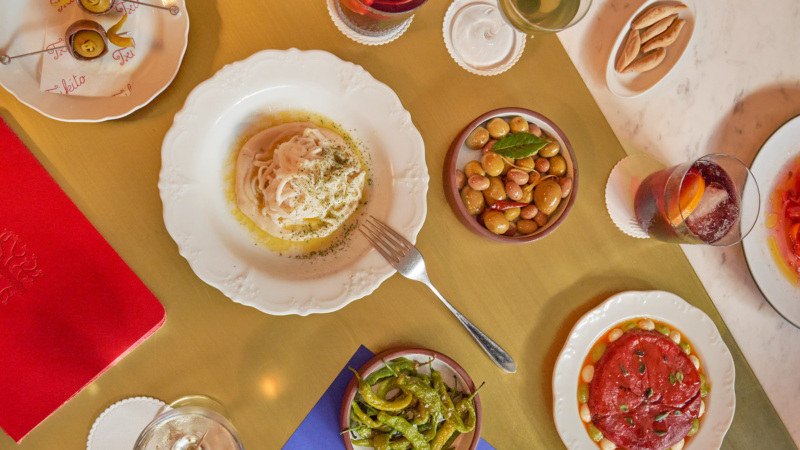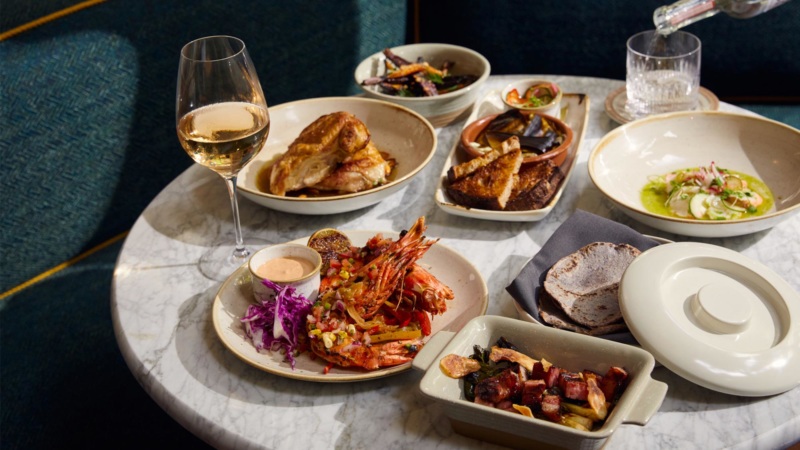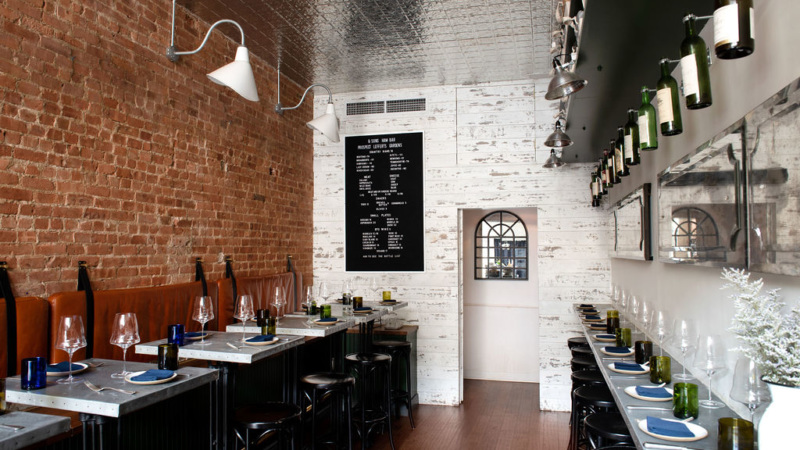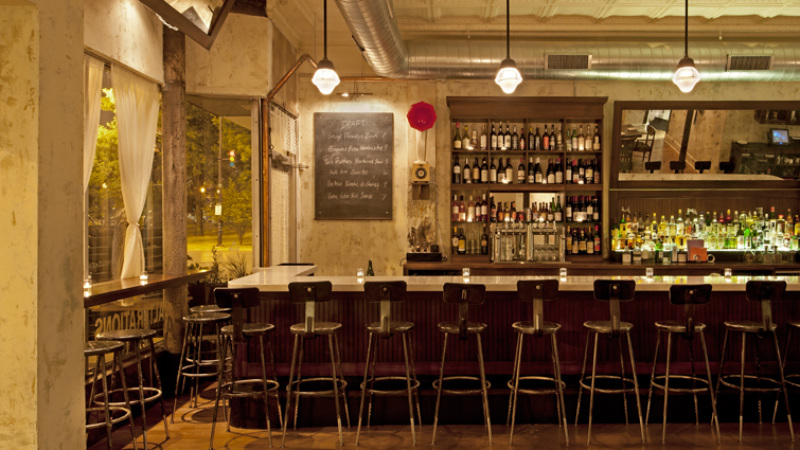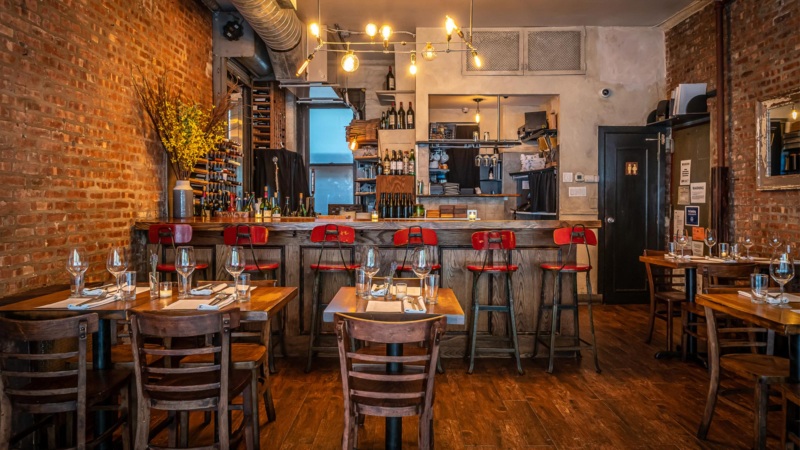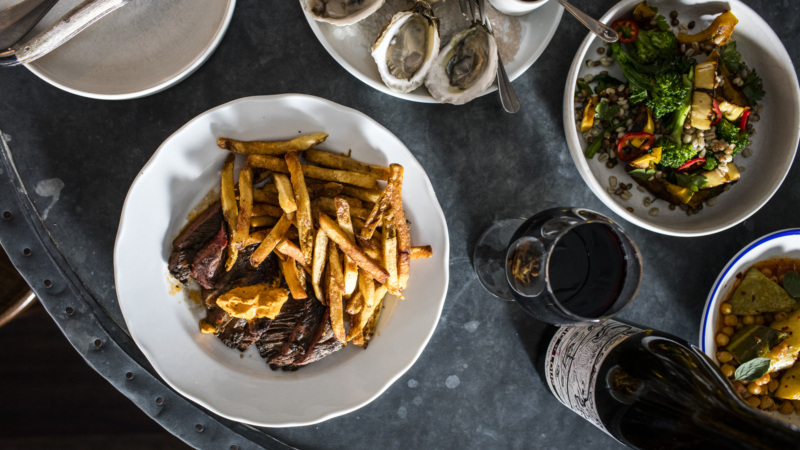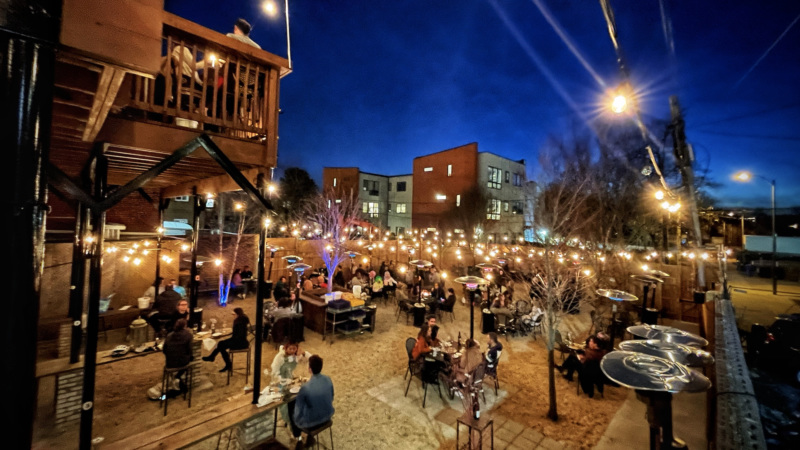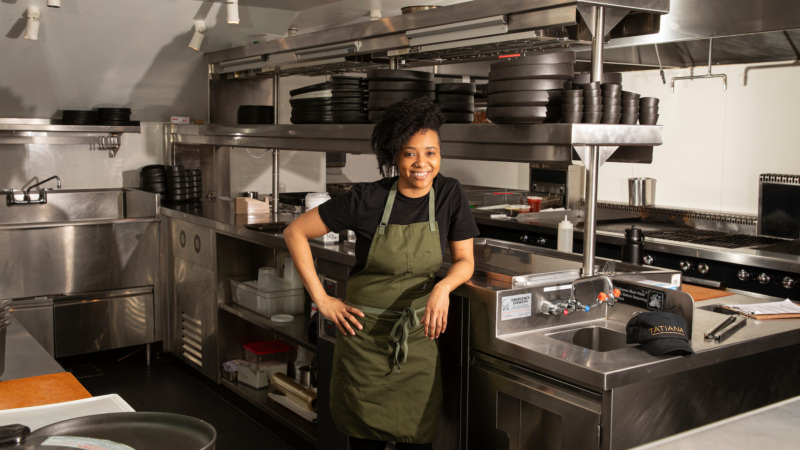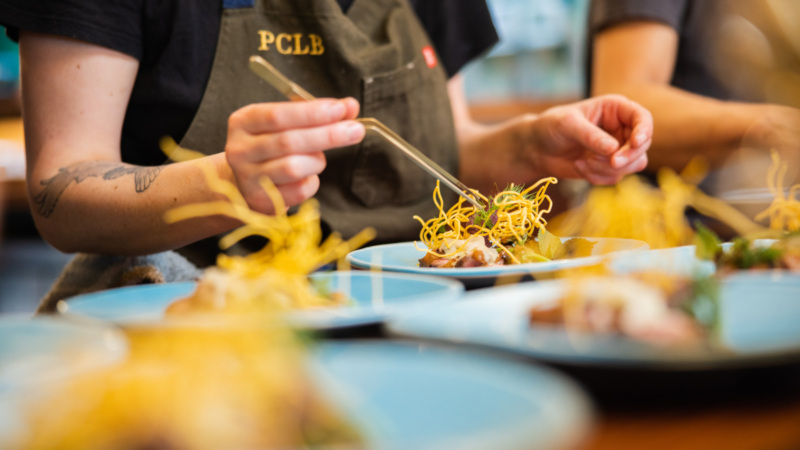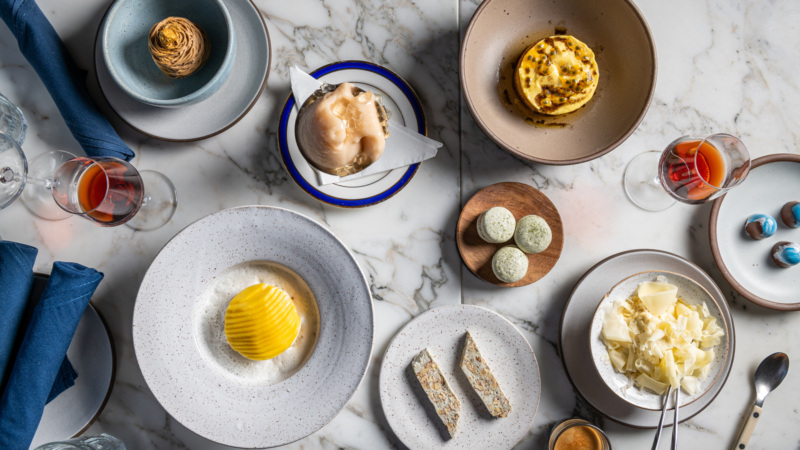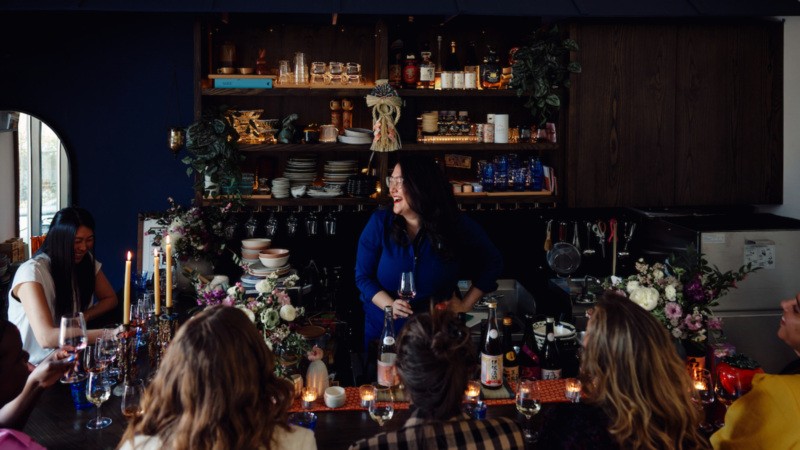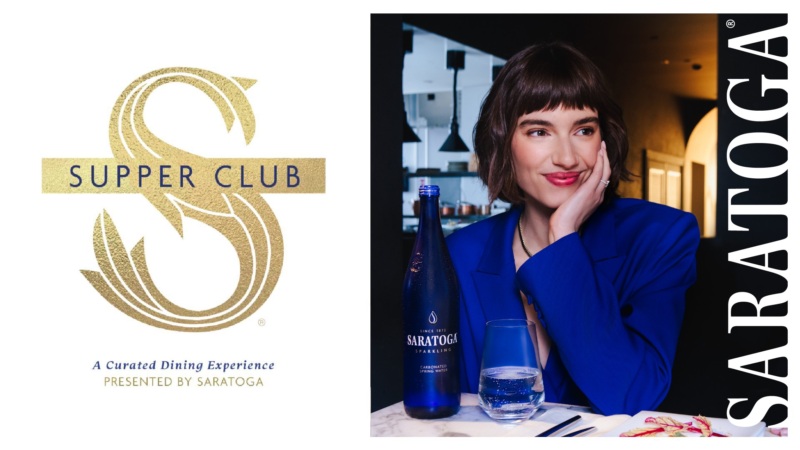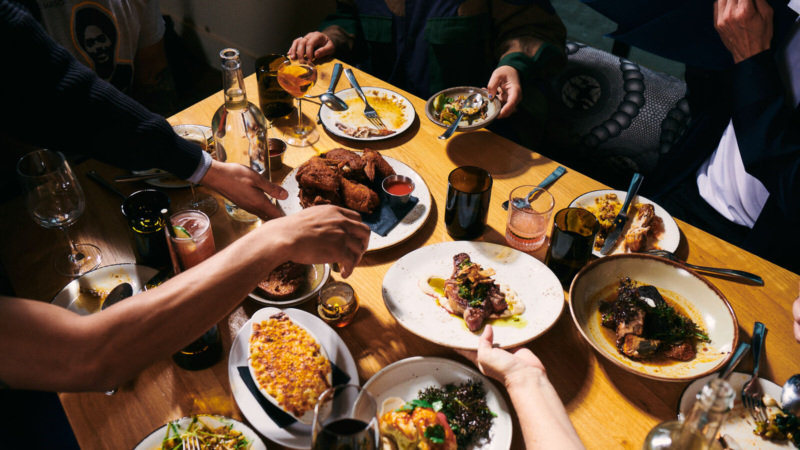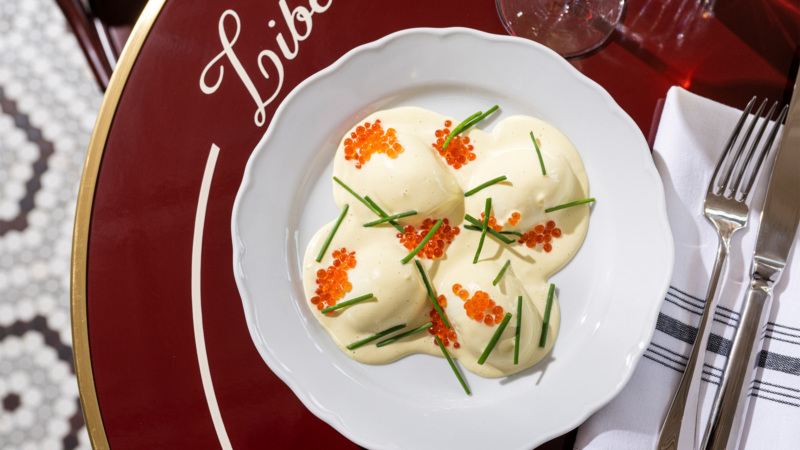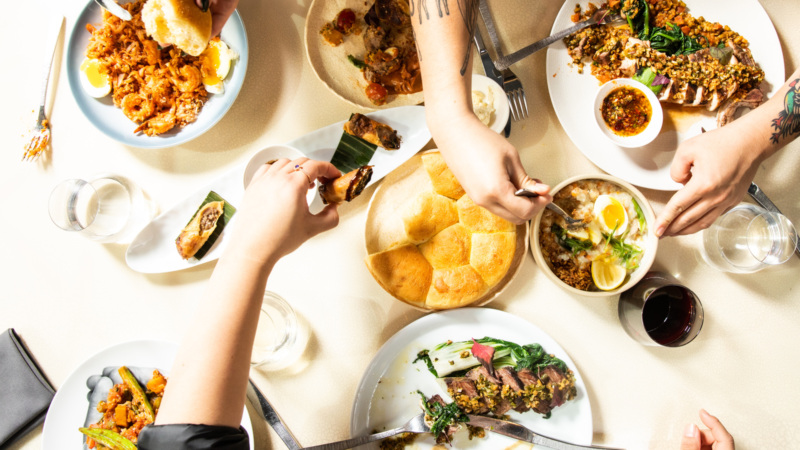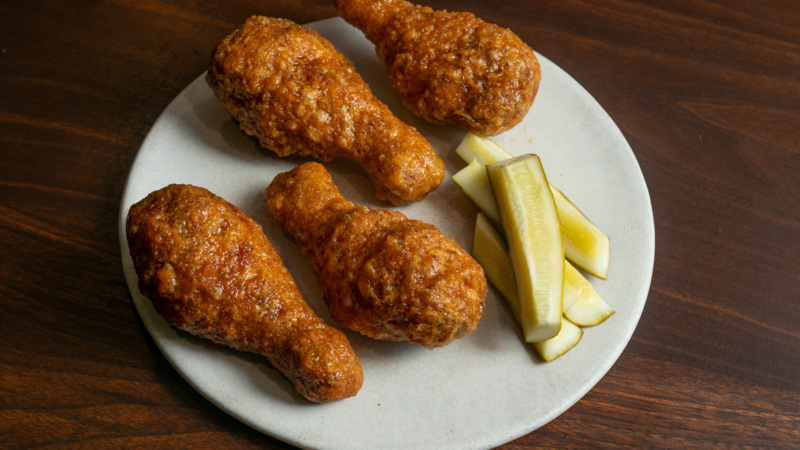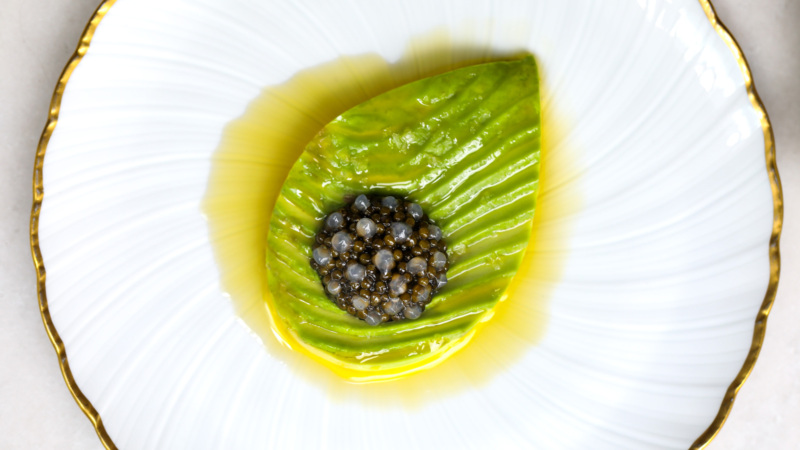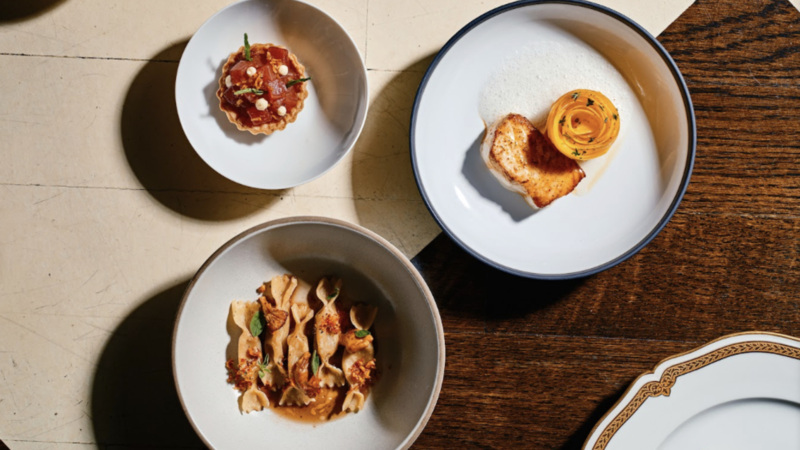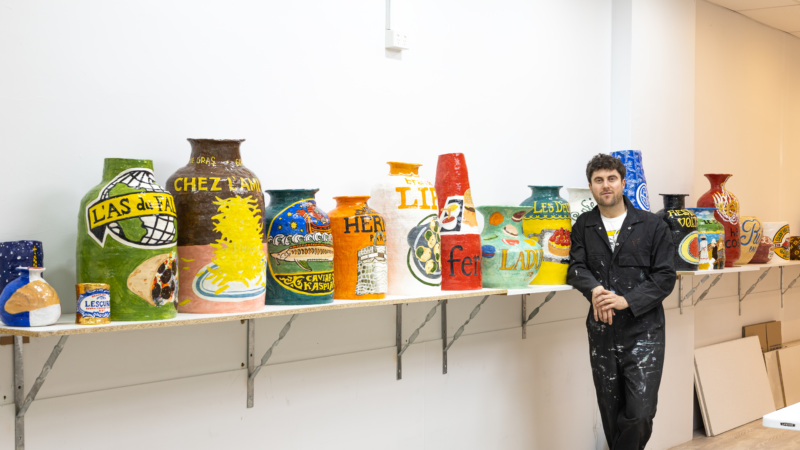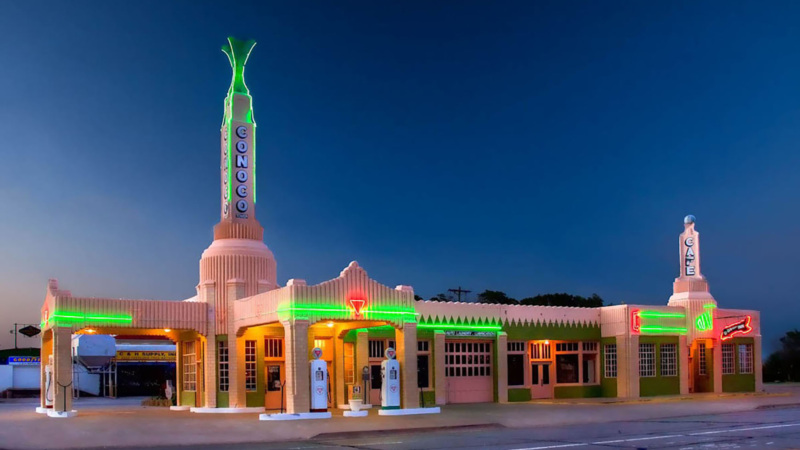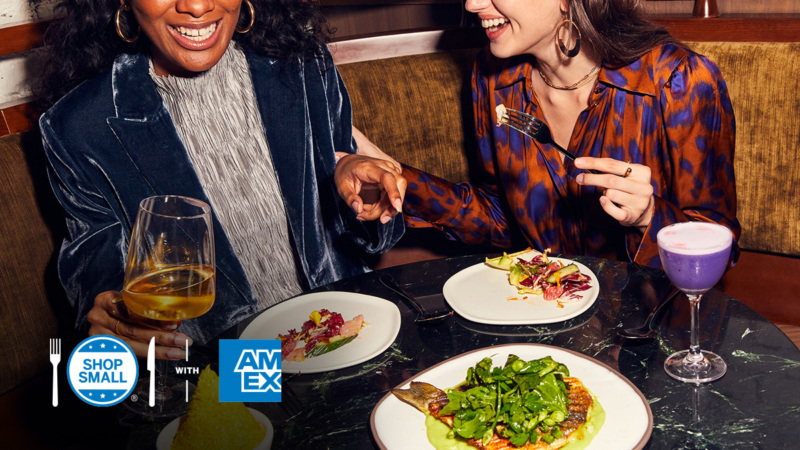
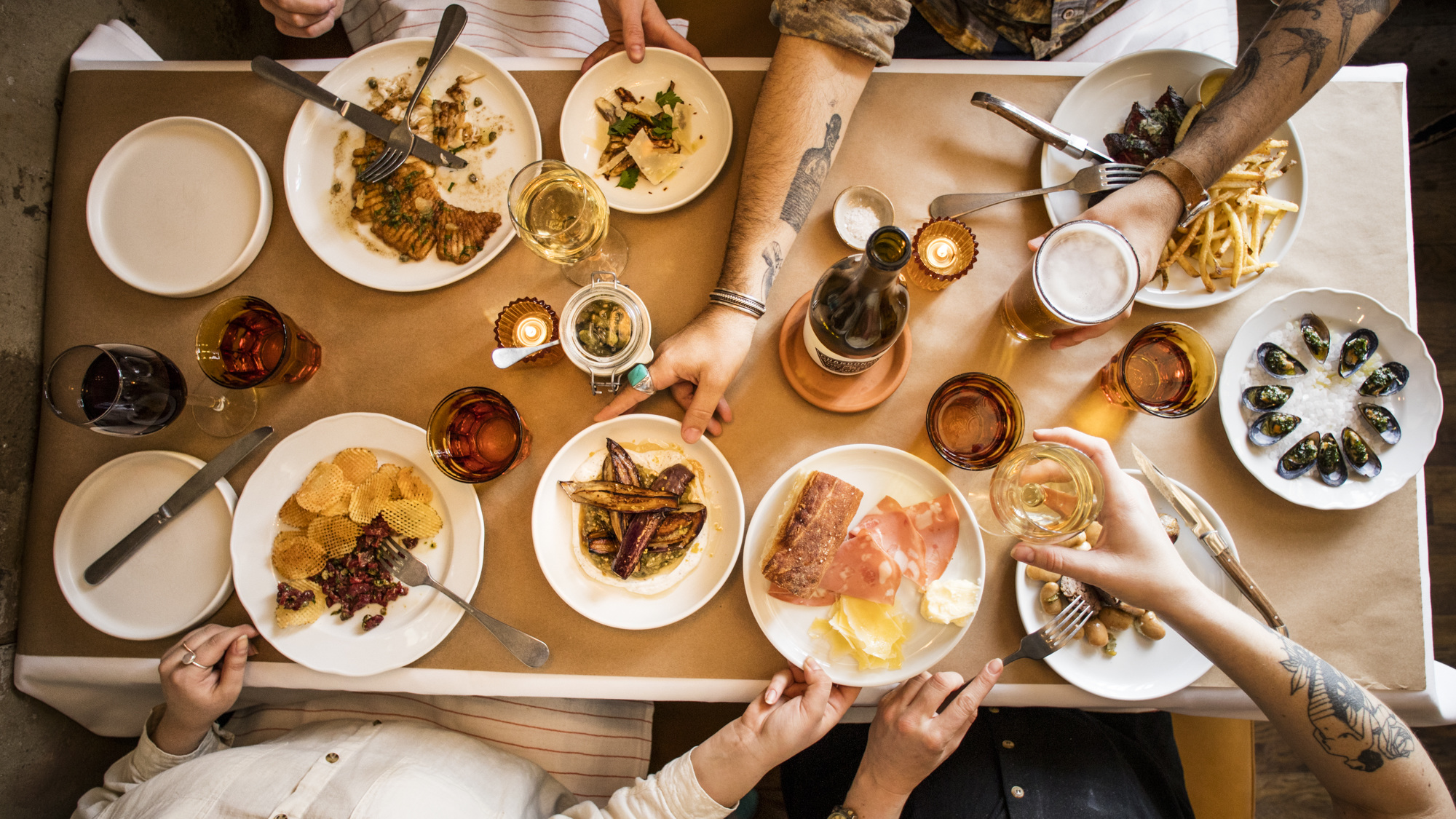
Neighborhood Restaurants Shape America’s Dining Culture
You’re at your favorite brunch spot. The place is buzzing, per usual. Your table is overflowing with food and drink, also per usual. There’s a chorus of laughter, oohs and ahhs as your friends dig into the spread. One is snapping overhead photos, while another heads straight for the cocktail.
The vibe, the food, the room, the ritual. Ever stop and wonder how we got here?
The nostalgic, almost-worn, but timeless design of the restaurant, with tin-pressed ceilings, whitewashed brick walls, and exposed wood beams? That’s an aesthetic popularized by places like Joseph Leonard, which has come to epitomize its cozy Greenwich Village neighborhood.
That shakshuka that’s currently being devoured by the table? Look to a foggy corner in San Francisco, where Mourad Lahlou (Aziza, Mourad) was instrumental in showcasing Moroccan and North African flavors to a new generation of diners.
The fresh sourdough that’s serving as both spoons for the shakshuka and delivery vehicle for the avocado toast? Outerlands, with a nod to its pals at Tartine, proved how diners will love (and pay for) incredible housemade bread. (Also, toast.)
And that round of mezcal Bloody Marys that everyone ordered? You can thank evangelists like Ivan Vazquez of Madre in Los Angeles for spreading the gospel of mezcal — and the glories of Mexican regional cuisine — to America.
You’ve probably heard of the trickle-down theory in fashion, right? It’s the idea that a version of the little black dress that Gisele showcases during Fashion Week will eventually find its way to the racks of Zara and H&M … and will then populate all your dinner parties, soon to be followed by your social media feed.
Restaurants, though, are different. The waves don’t come from a Paris catwalk; rather, the trends that you see proliferating the country come from all around you: your local wine bar, your favorite all-day spot, and yes, even some temples of haute cuisine (looking at you, Copenhagen). There are myriad examples like this — but that’s not to say that these restaurants invented a dish or are the only ones to put it on a menu, but they popularized it, they perfected it, they sparked its rise. They shaped the way we eat today.
Because here’s the thing: Between acclaimed chef shows, endless TikTok cheese pulls, and the adrenaline rush of those beloved Resy Notifies, restaurants are at the center of pop culture in America right now.
And so many of the influences that have shaped modern dining culture can be traced back to neighborhood restaurants — those small, independently owned businesses that have thrived thanks to the vision, talent, and creativity of their operators. And over time, these influential restaurants have shaped our dining culture.
A final example: One of the most exciting developments in modern cuisine in America today is the way that chefs have embraced nostalgia, usually including their heritage, to reshape the cuisines of the past. Whether it’s the boom of the glam red sauce joint (Carbone! La Dolce Vita!) or the way that Chinese American cuisine has been cemented as its own cultural pillar, this movement has empowered a new generation of restaurants to break boundaries and celebrate cultures.
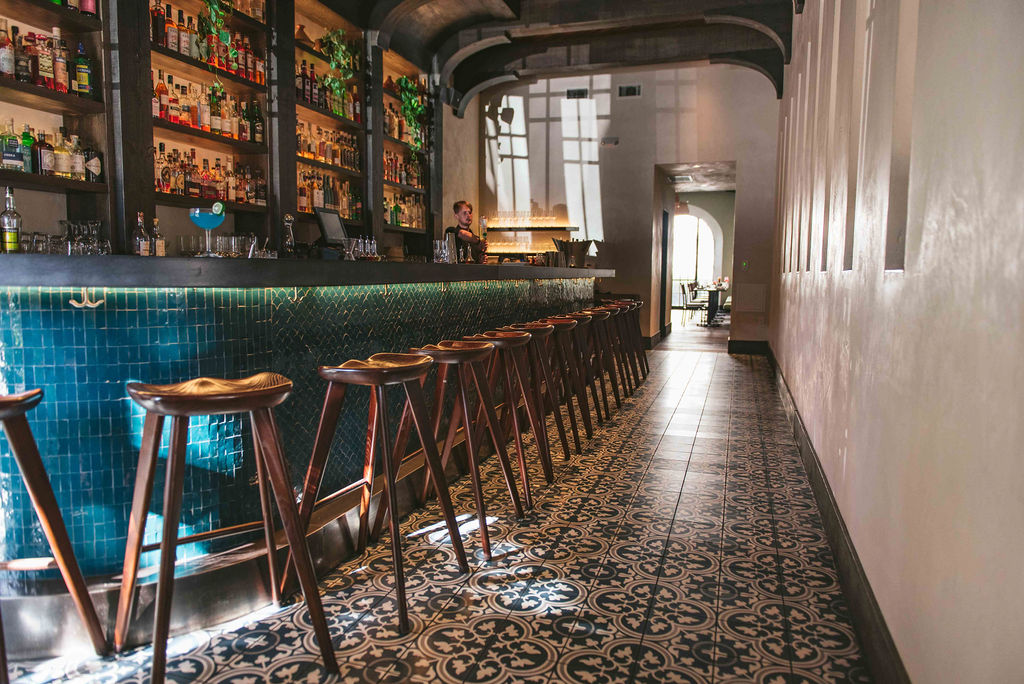
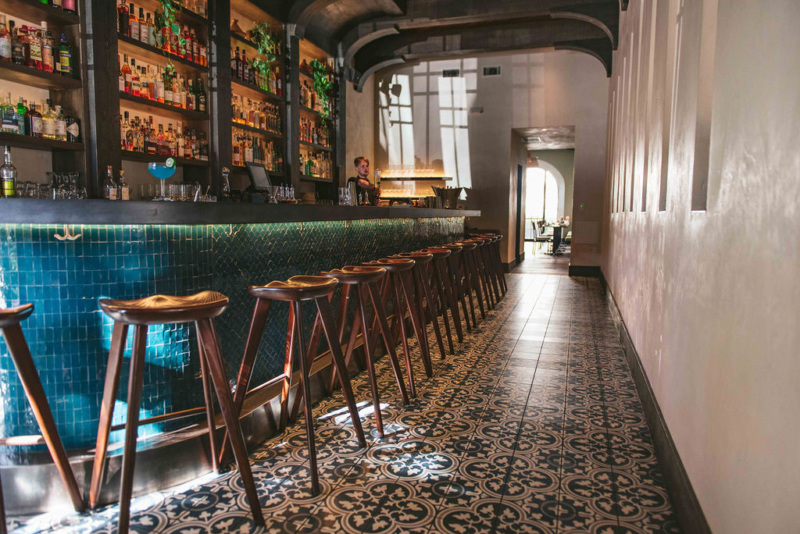
In 1998, Mourad Lahlou opened a Moroccan restaurant on the outer western reaches of San Francisco. He named it Aziza, after his mother. At the time, he was a recovering grad student, and like many immigrants, he started cooking to recreate the nostalgic flavors of home. But with Aziza, he wanted to take a different approach to Moroccan restaurants, moving it away from the bellydancers and tent aesthetic that dominated its stereotypes here in America.
In 2010, it became the first African restaurant in North America to earn a Michelin star. At the time, it was one of 94 restaurants in all of America to hold a Michelin star — but one of the three without a European or Japanese focus (along with New York’s beloved, bygone Annisa and Rhong Tiam).
Look at that same list today, and you’ll see an explosion of cultures represented, all interpreted through a personal lens, all serving food unlike anywhere else: Kin Khao (Thai), Semma (Indian), Tuome (Chinese), Galit (Middle Eastern), Kato (Taiwanese), Taco María, Casa Enrique and Los Félix (Mexican), Kasama (Filipino), Jeju Noodle Bar, Kochi and Jua (Korean), just to name a few.
The list goes on, and will continue to grow.
This is how small restaurants impact our culture. Welcome to the Resy Tastemakers.
Paolo Lucchesi is Resy’s Editorial Director. Email him at paolo.lucchesi@resy.com. And follow Resy on Instagram and TikTok.


